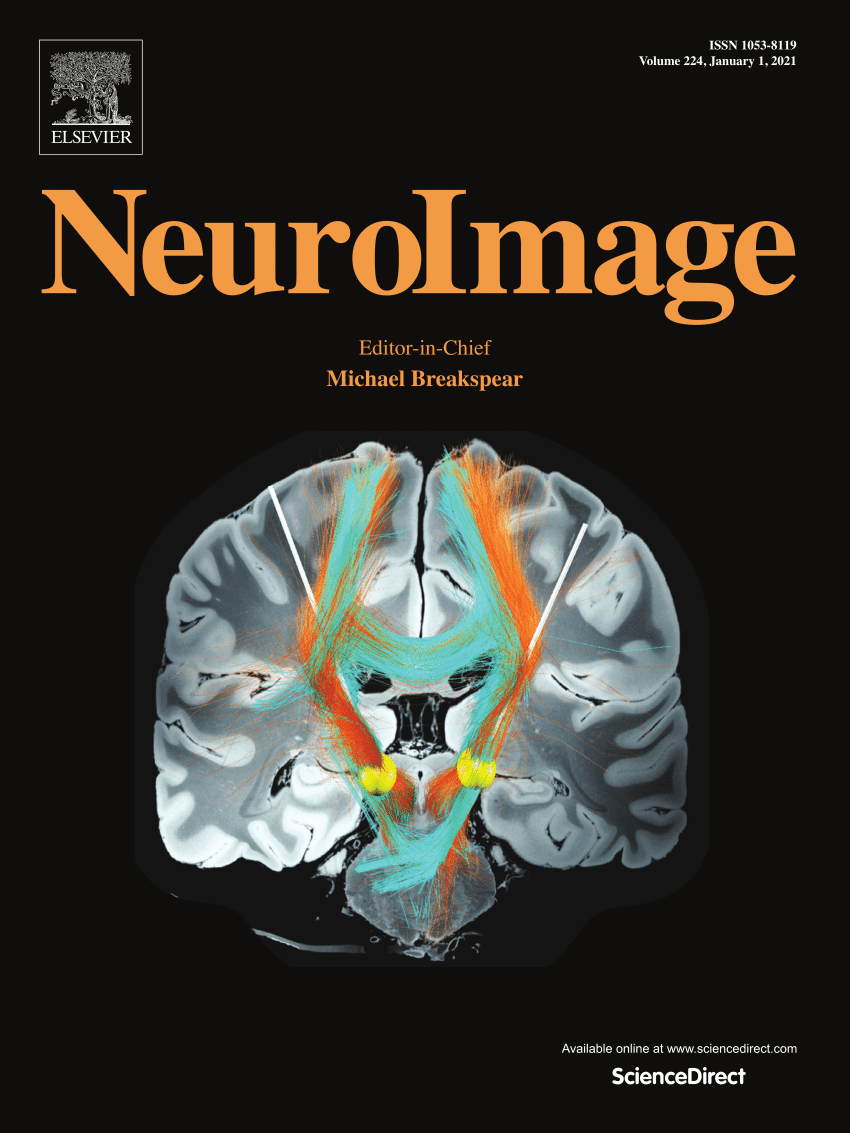大脑内部回声:更长的时间尺度,更强的循环连接和自我区域更高的神经兴奋
IF 4.7
2区 医学
Q1 NEUROIMAGING
引用次数: 0
摘要
长期以来,理解大脑的内在结构一直是神经科学的中心焦点,最近的进展揭示了沿单峰和跨峰区域的地形组织。然而,大脑的全球单跨模式地形与我们的自我意识等心理特征之间的关系尚不清楚。方法本研究将fMRI脑成像与计算模型(Wilson Cowan模型)相结合,以更好地了解大脑整体地形中自我和非自我区域区分的时间、空间和生理特征。结果fmri静息状态显示髓磷脂含量较低,时间尺度较长(通过自相关窗口/ACW测量),自我区域(基于三层自我地形;Qin et al. 2020)与非自我区域相比。接下来,我们将fMRI数据与神经质量模型Wilson-Cowan模型拟合,该模型由人体MRI/fMRI的结构和功能连接数据丰富。我们首先用更长的ACW和更低的GSCORR在自我区域复制经验数据。接下来,我们证明,基于模型中相同的测量,自我和非自我区域不仅可以在大脑的全球地形中区分,而且可以分别在单峰和跨峰区域中区分。最后,神经质量模型表明,这种地形分化与两个生理特征有关:自我区域表现出更高的区域内兴奋性循环连接,并且其基础神经兴奋水平高于非自我区域。结论本研究揭示了大脑整体单跨峰地形中自我和非自我区域的本质区别,以及它们潜在的生理差异,自我区域的循环连接和神经兴奋水平均较高。自我区域中增加的循环连接,加上它们更高水平的神经兴奋和更长的自相关窗口,可能非常适合调解它们的自我参照处理:因此,这可以被视为一种“心理复发”形式,其中一个相同的输入/刺激以一种类似于回声室的方式被处理,也就是说,自我区域本身的内部回声。本文章由计算机程序翻译,如有差异,请以英文原文为准。
The brain’s internal echo: Longer timescales, stronger recurrent connections and higher neural excitation in self regions
Background
Understanding the brain's intrinsic architecture has long been a central focus of neuroscience, with recent advances shedding light on its topographic organization along uni and transmodal regions. How the brain’s global uni-transmodal topography relates to psychological features like our sense of self remains yet unclear, though.
Method
We here combine fMRI brain imaging with computational modeling (Wilson Cowan model) to better understand the temporal, spatial and physiological features underlying the distinction of self and non-self regions within the brain’s global topography.
Results
fMRI resting state shows lower myelin content, longer timescales (measured by the autocorrelation window/ACW), and lower global functional connectivity/synchronization (measured by global signal correlation/GSCORR) in self regions (based on the three-layer self topography; Qin et al. 2020) compared to non-self regions. Next, we fit the fMRI data with a neural mass model, the Wilson-Cowan model, which is enriched by structural and functional connectivity data from human MRI/fMRI. We first replicate the empirical data with longer ACW and lower GSCORR in self regions. Next, we demonstrate that self and non-self regions can, based on the same measures in the model, not only be distinguished within the brain’s global topography but also within the unimodal and transmodal regions themselves, respectively. Finally, the neural mass model shows that such topographic differentiation relates to two physiological features: self regions exhibit higher intra-regional excitatory recurrent connection and higher levels in their basal neural excitation than non-self regions.
Conclusion
Our findings demonstrate the intrinsic nature of the distinction of self and non-self regions within the brain’s global uni-transmodal topography as well as their underlying physiological differences with higher levels in both recurrent connections and neural excitation in self regions. The increased recurrent connections in self regions, together with their higher levels of neural excitation and the longer autocorrelation window, may be ideally suited to mediate their self-referential processing: this can thus be seen as a form of ‘psychological recurrence’ where one and the same input/stimulus is processed in a prolonged echo-chamber like way, that is, an internal echo within the self regions themselves.
求助全文
通过发布文献求助,成功后即可免费获取论文全文。
去求助
来源期刊

NeuroImage
医学-核医学
CiteScore
11.30
自引率
10.50%
发文量
809
审稿时长
63 days
期刊介绍:
NeuroImage, a Journal of Brain Function provides a vehicle for communicating important advances in acquiring, analyzing, and modelling neuroimaging data and in applying these techniques to the study of structure-function and brain-behavior relationships. Though the emphasis is on the macroscopic level of human brain organization, meso-and microscopic neuroimaging across all species will be considered if informative for understanding the aforementioned relationships.
 求助内容:
求助内容: 应助结果提醒方式:
应助结果提醒方式:


